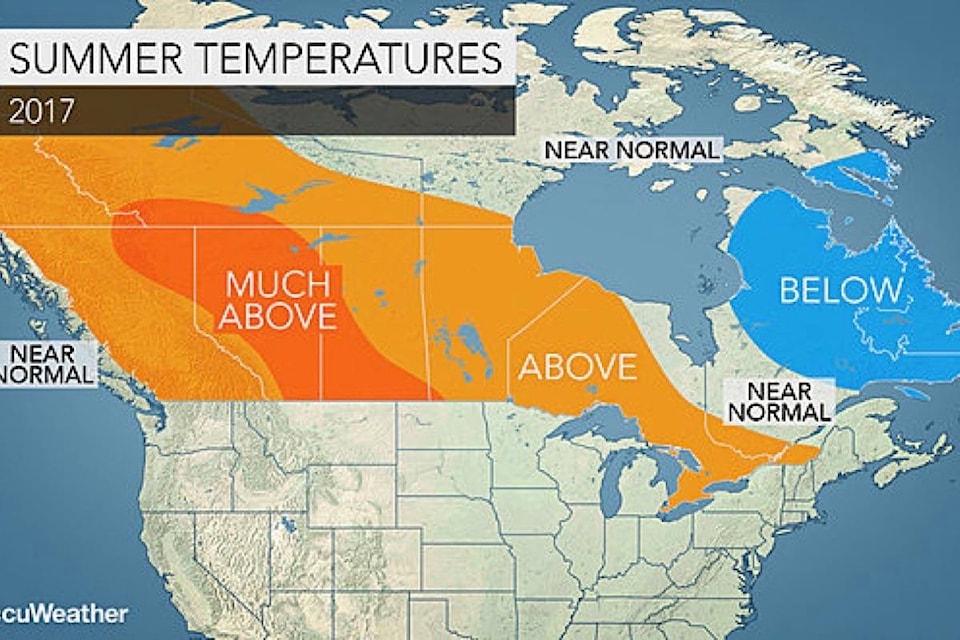Although the Burns Lake area has seen a fairly wet spring, that won’t be the trend for the summer, according to Environment Canada.
Cindy Yu, a meteorologist with Environment Canada, said July and August will bring warmer than normal temperatures, as well as a drier weather pattern. Although these conditions might be great for a summer vacation, they also increase the risk of wildfire activity.
Olivia Pojar, fire information officer for the Northwest Fire Centre, said the B.C. Wildfire Service closely monitors long-term forecasts, including the ones produced by Environment Canada, as part of the maintenance of appropriate preparedness levels.
“The B.C. Wildfire Service operates over 200 automated weather stations to record hourly weather observations that are interpreted by a fire weather forecaster assigned to the Northwest Fire Centre,” she explained, adding that weather cannot be reliably forecast more than a few days in advance.
“June can bring significant precipitation in the form of rain, and these June rains can help reduce the dryness of forest fuels as the summer progresses,” she added.
As of June 6, 2017, there had been 21 wildfires within the Northwest Fire Centre region, in line with the 10-year average for this date. Six of these wildfires occurred within the Lakes District area. A 20-person unit crew and two three-person initial attack crews have been working out of Burns Lake this season.
Summer is expected to be drier than normal for most areas across B.C., including Vancouver. AccuWeather senior meteorologist Brett Anderson said the projected drier weather pattern across the southern interior favours a higher number of days above 30 C compared to normal.
Meanwhile much of the country is expected to have a “warm to very warm” summer. The exception will be from Labrador and northern Quebec to Atlantic Canada.
